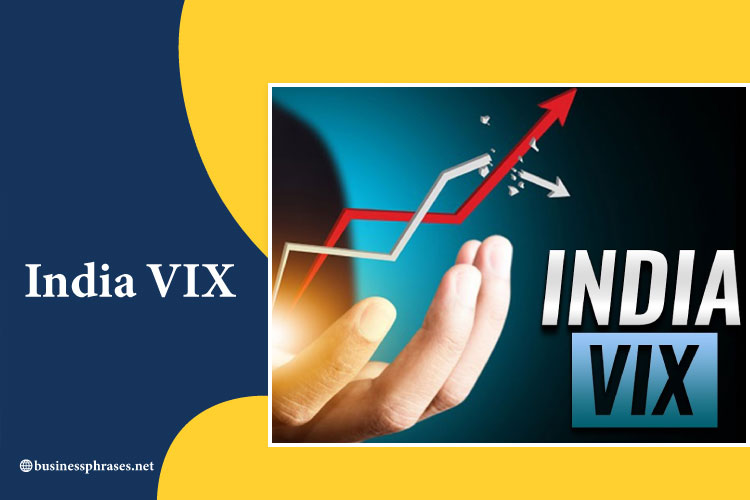Table of Contents
Introduction: What is India VIX?
The India VIX (Volatility Index) also known as the “fear gauge” of the Indian stock market is a key indicator that reflects investor sentiment and expected market volatility over the next 30 days. Introduced by the National Stock Exchange (NSE) in 2008, India VIX plays a pivotal role in predicting market uncertainty and is derived from the order book of Nifty 50 index options.
Understanding how India VIX works can help investors anticipate market swings, manage risks, and create better-informed strategies.
📉 India VIX vs Nifty 50: The Inverse Relationship
The Nifty 50, India’s benchmark index representing 50 of the largest companies listed on the NSE, often reacts inversely to movements track india vix:
- 🔼 When India VIX rises, market participants expect increased volatility, leading to downward pressure on the Nifty 50.
- 🔽 When India VIX falls, it suggests market stability and investor confidence, which often boosts Nifty 50 performance.
📌 Example: During events like Union Budget announcements, global geopolitical tensions, or economic slowdowns, India VIX spikes, reflecting panic and triggering sharp Nifty 50 corrections.
🧮 How is India VIX Calculated?
India VIX is derived using the Black-Scholes Model, based on the implied volatility of Nifty options. Here’s how it works:
- Uses the bid-ask prices of near- and next-month Nifty 50 options.
- Reflects the annualized volatility expected in the next 30 calendar days.
- Expressed as a percentage. For instance, a VIX value of 20 implies track nifty 50 could fluctuate ±20% annually in the short term.
💹 Why is India VIX Important for Investors?
1️⃣ Market Sentiment Gauge
India VIX acts as a real-time indicator of market fear or confidence. A high VIX suggests nervousness; a low VIX implies calm.
2️⃣ Risk Management Tool
Traders use India VIX to hedge portfolios using derivatives during uncertain periods.
3️⃣ Volatility-Based Trading Strategies
India VIX helps deploy strategies like straddles, strangles, or iron condors that benefit from increased volatility.
4️⃣ Better Timing for Entry/Exit
Smart investors look for VIX trends to buy during fear (high VIX) and sell during complacency (low VIX).
🔍 Recent Trends in India VIX & Nifty 50
As of early 2025, the India VIX has remained relatively stable, hovering around 12–15 levels, indicating low short-term volatility. Meanwhile, the Nifty 50 has surged to all-time highs, backed by:
- Strong Q3 corporate earnings 💼
- Robust GDP growth 📈
- Increased FPI inflows 💰
However, global cues like the US Fed’s interest rate decisions, crude oil prices, or Middle East tensions could cause sudden spikes in India VIX.
🛠️ How to Use India VIX in Your Investment Strategy?
✅ For Long-Term Investors:
- Use high VIX periods to buy quality track stocks at discounted prices.
- Refrain from panic selling during VIX spikes.
✅ For Short-Term Traders:
- Monitor VIX closely before taking positions in F&O (Futures and Options).
- Avoid fresh trades when VIX is rising fast—wait for stability.
✅ For Option Traders:
- High VIX → Higher option premiums
- Low VIX → Lower option premiums
Understanding India VIX is crucial for pricing options correctly and managing volatility risk.
🌐 Global Correlation: India VIX and CBOE VIX
India VIX often mirrors movements in the CBOE VIX (US Volatility Index). When global volatility increases, particularly in US markets:
- India VIX tends to spike 📊
- Nifty 50 and Sensex may experience correction 📉
Investors must consider global cues alongside domestic indicators to make sound decisions.
🔮 Future Outlook: What Lies Ahead?
As the Indian economy continues to expand and integrate with global markets, India VIX will become an even more essential tool for gauging investor sentiment and preparing for market fluctuations.
Key takeaways:
- India VIX is a volatility thermometer of the market.
- Nifty 50’s movement often contrasts with India VIX.
- Use India VIX alongside other technical/fundamental tools to build a robust investment strategy.
🧠 Final Thoughts
In summary, India VIX is not just for technical traders it’s a critical sentiment indicator for anyone participating in the Indian stock market. Whether you’re trading Nifty 50 futures or investing in large-cap stocks, understanding the message behind VIX numbers can help you stay ahead of market movements.

